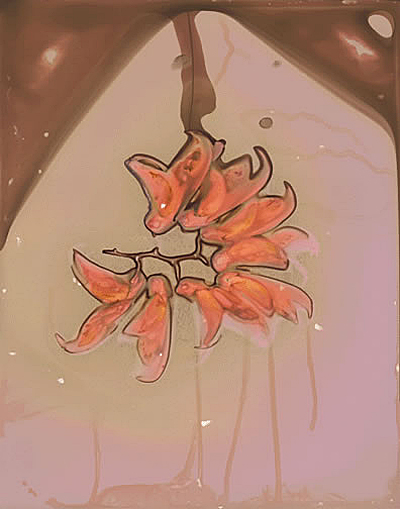I would be remiss if I didn't include a post about the late Jerry Burchfield here on 52 Photographers. I can only think of two or three other people who have had such a strong and lasting influence on me as an artist.
I first discovered Burchfield in 2005. I was researching presenters for the National Conference of the Society for Photographic Education held in Portland, Oregon. I was in the middle of completing my BFA project, which dealt with public parks. One of the lectures given was about the transformation of the El Toro Marine Corps Air Station, which closed in 1999, into a park and residential use. Burchfield, Mark Chamberlain and four other photographers embarked on the Legacy Project (you can see the project's website here), photographing and documenting the transformation of the land from air field to public park. My research led me Burchfield's lumen prints, a term he coined. Before then, I (along with the vast majority of the photographic community) was oblivious to the existence of such a thing as a lumen print. At least, as known by that name. The lumen print, which is really a variation of the photogram, has it's roots in the photogenic drawings William Henry Fox Talbot did in the mid-1830's. Anna Atkins followed in Talbot's footsteps, publishing her book Photographs of British Algae: Cyanotype Impressions, which is considered to be the first book illustrated by photographs. Then the photogram process (though still not known by that term) became popular in Europe in a post-World War 1 art movement. First Christian Schad, a German, experimented with the process, humbly (note the sarcasm) naming his works Schadographs, then Man Ray made similar images, and named his works Rayographs. Then the Hungarian Laszlo Moholy-Nagy produced his own work, and named the process the Photogram, which is still in use today.
For over 7 years, Burchfield traveled to the Amazon to make his lumen prints on-site, on the deck of a boat. His aim was to "create images that are free of inherent bias and commentary while still expressing ecological concerns by drawing attention to the beauty of the place."
I was stunned at the beauty of Burchfield's images, and even further stunned when I learned how simple the lumen process is, and that the different colors came from black and white photographic materials!
I learned only a few years ago that Burchfield passed away in 2009 from colon cancer, but his legacy still lives on, and his influence on my work is still greatly felt today.






